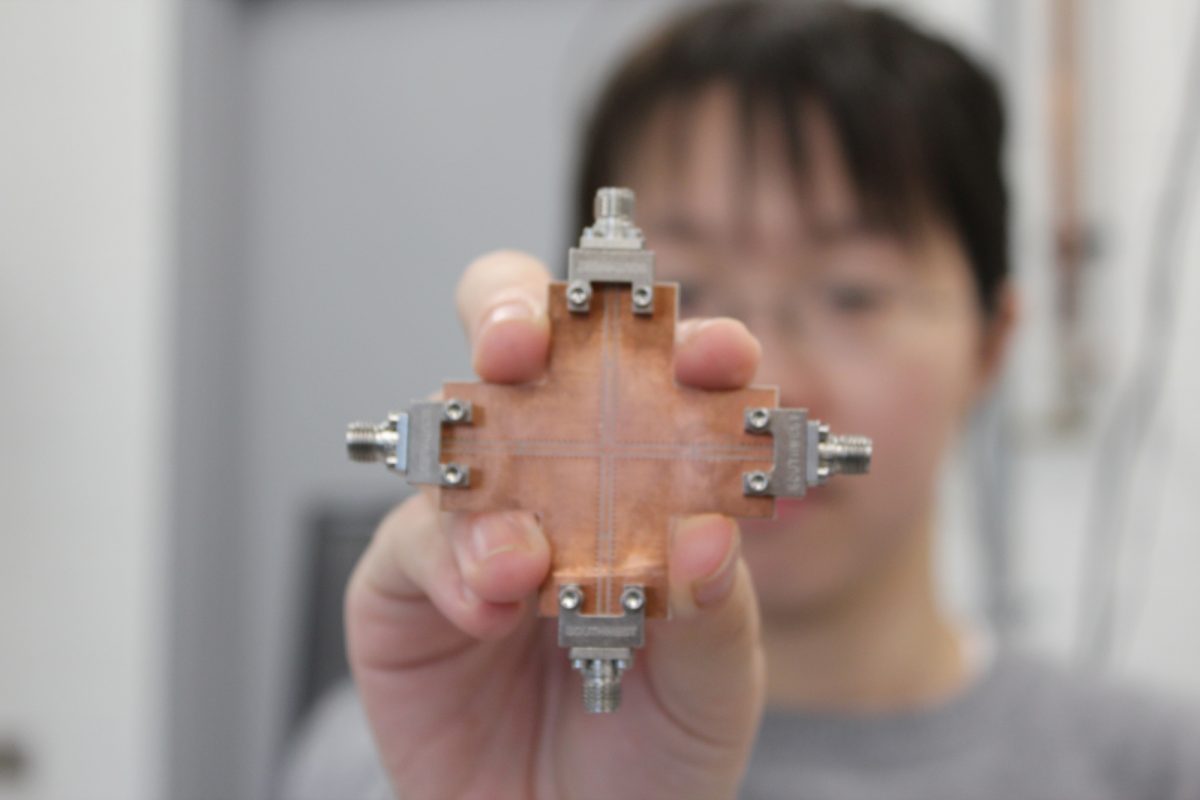
Ying Yang shows a nonreciprocal microwave device that can "cloak."
Grad student research in breast cancer detection, smart devices and Star Trek-like tech lauded with distinguished award
Three recent graduates from the Faculty of Graduate Studies have received the University of Manitoba Distinguished Dissertation Award for ground-breaking original research.
ALI SAFIAN
Price Faculty of Engineering, department of mechanical engineering

You can’t see the outcome of Ali Safian’s research, but the smart sensors he created, hidden inside industrial machines, will make the environments they operate in safer and more efficient.
Machines with rotating components have roller bearings which can be dangerous and expensive if they fail during operation. Because of this, their physical condition is constantly monitored. Safian’s sensors differ from traditional methods in that they can be installed next to the bearing, providing clearer data, and are made from piezoelectric materials, which are more cost-effective.
“The uniqueness of our research lies in its simplicity combined with high performance,” explains Safian. “In noisy environments, our transducer outperformed existing sensors on the market, which was promising. We found that we could also measure and monitor the speed of rotation, eliminating the need for a separate speed sensor. This reduces costs while enhancing the transducer’s functionality.”
Safian currently works as an acoustic and vibration specialist at AECOM, applying his academic knowledge in practical settings.
QIAN LIU
Rady Faculty of Health Sciences, department of biochemistry and medical genetics

Using the latest in advanced artificial intelligence (AI), Qian Liu developed new models that can improve the interpretation of MRI scans, enhancing the early detection and accurate diagnosis of breast cancer.
“Understanding the relationship between genetic markers and imaging features can lead to more personalized treatment plans for patients,” explains Liu. “This is especially important in cancer care. By automating and improving the accuracy of diagnostics through AI, my research has the potential to reduce the time and cost associated with manual analysis and interpretation of medical data. This can help make high-quality health care more affordable and accessible to a larger population.”
Liu made the AI software tools she developed open access in the hopes that they can be applied in broader contexts. She is currently an assistant professor at the University of Winnipeg, where she aims to advance the field of precision medicine by improving diagnostic accuracy and treatment planning through data science.
YING YANG
Faculty of Science, department of physics and astronomy

For her PhD work, Ying Yang delved into the complex world of light-matter interaction. By coupling magnetic materials (magnons) and microwaves (photons) together in tiny, specially designed cavities, she began to see novel behaviours of both materials emerge.
“It can be understood by the toy model in our lab: two pendulums, resembling the magnon and photon modes, can be connected through a spring. One pendulum’s move affects the other to transfer energy back and forth to build the coupling.”
Her groundbreaking contribution to the development of cavity magnonics has theoretical implications for the development of non-Hermitian physics, a new frontier of quantum physics.
In the lab, Yang has been part of a UM research team that used her insights to design a “Romulan Cloaking Device” device reminiscent of Star-Trek which can render microwaves invisible.
Yang is currently completing a post-doctoral fellowship at the University of Chicago.
“I would like to extend my sincere congratulations to the winners of the Distinguished Dissertation Award for the amazing research that they have conducted during their time at UM,” says Kelley Main, Dean of the Faculty of Graduate Studies. “They are an inspiring group of alumni.”
University of Manitoba Distinguished Dissertation Awards are given to graduating doctoral students who have been nominated by their faculty/college/school for a dissertation that represents a ground-breaking piece of original work. Each year, one award is offered in each of the following categories: applied sciences, health sciences, humanities, natural sciences, and social sciences. Awardees receive a $3,000 prize.






